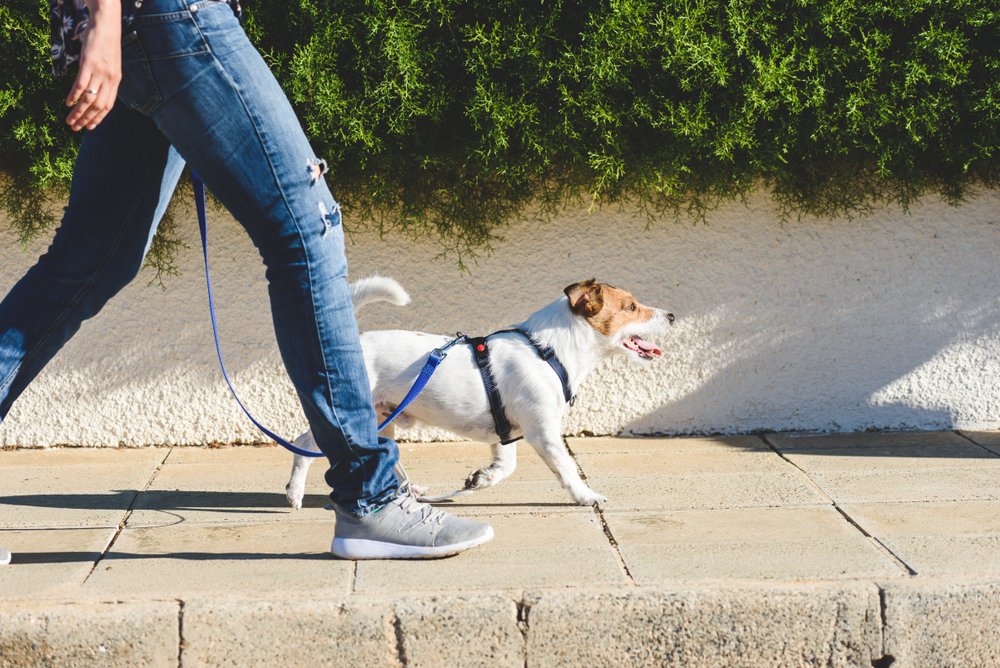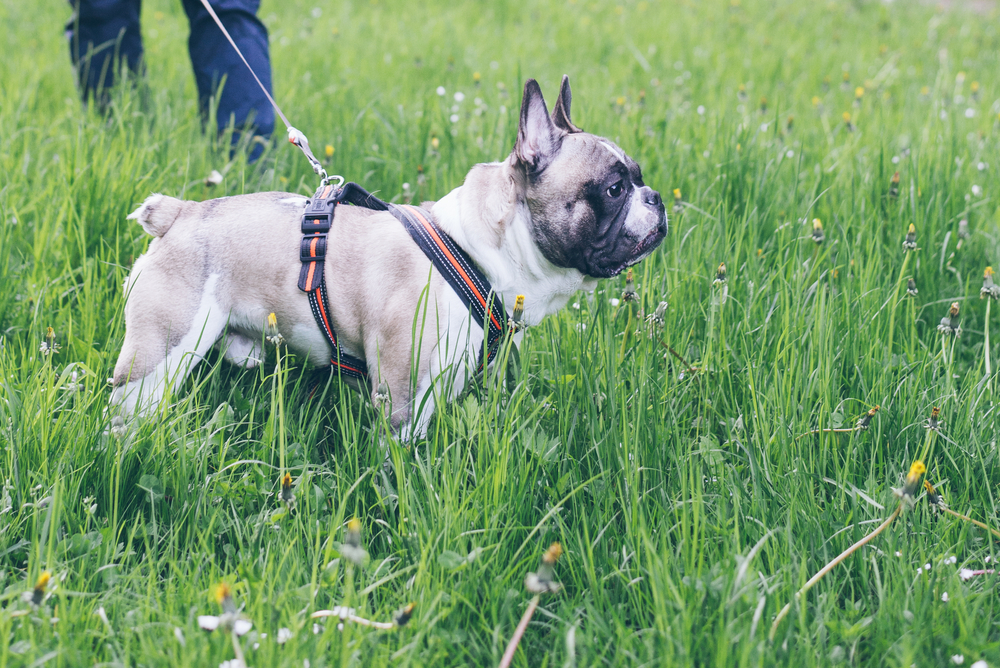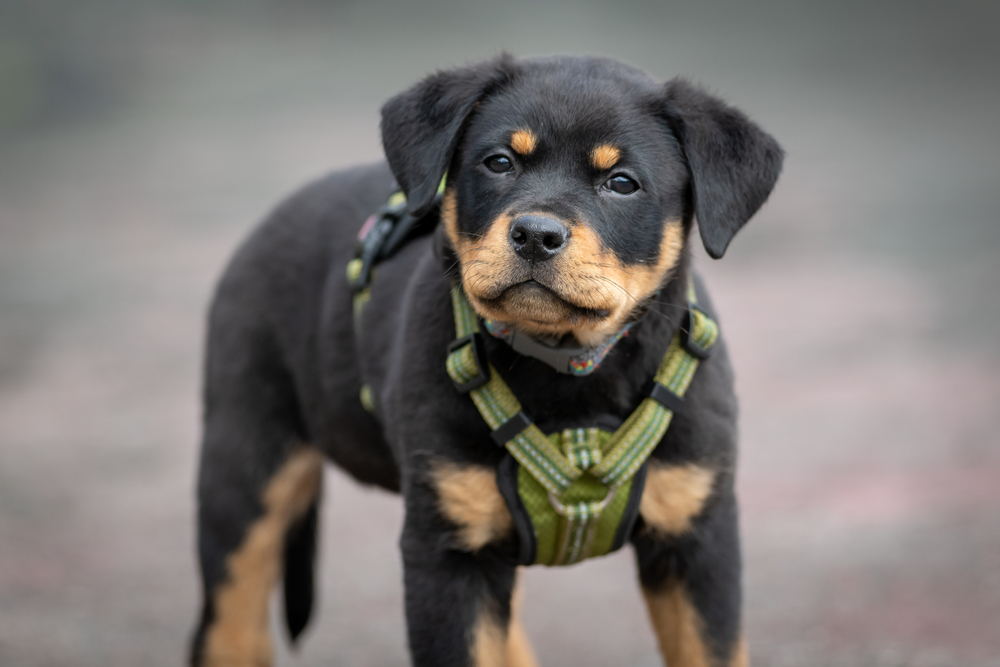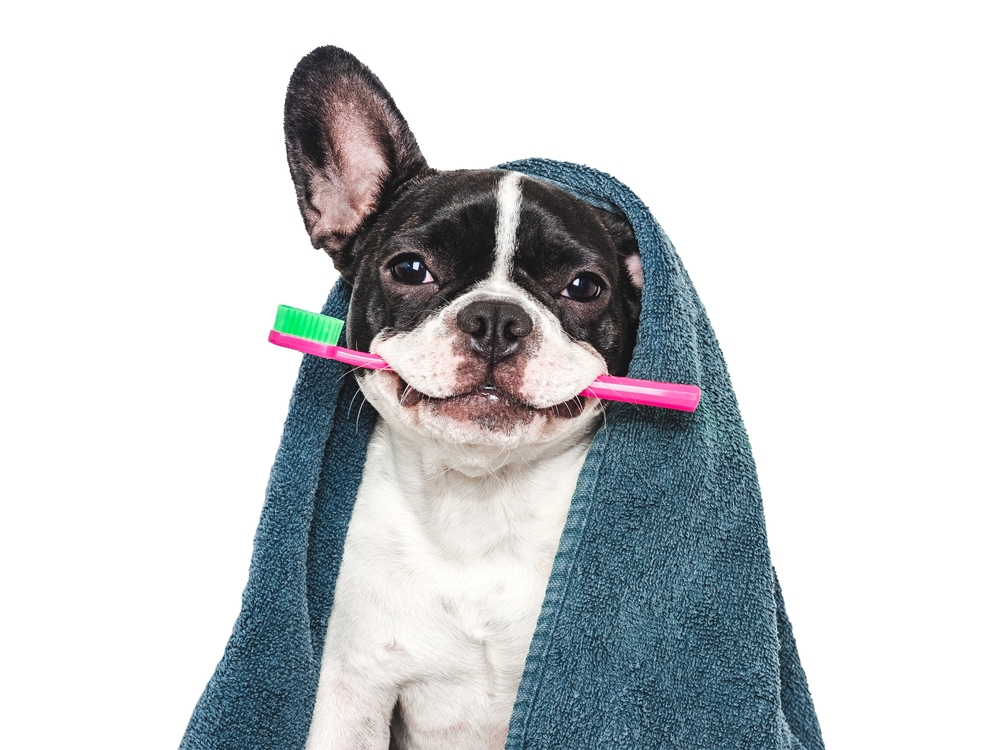Harnessing the Walk: Choosing the Right Dog Harness
Updated on May 21, 2024

Choosing the right dog harness is an important decision pet parents make. Having control of your dog on walks is essential for a happy dog and a happy owner, and the right type of walking equipment can help.
Body harnesses are a great tool because of the comfort they afford the dog and the ease with which most dogs adjust to them. There are hundreds of such harnesses available, many of which vary in style and function. With the wide variety to choose from, how do you find the right fit for your dog?
All featured products are chosen at the discretion of the author. However, Vetstreet may make a small affiliate commission if you click through and make a purchase.

Choosing the Right Dog Harness
Here’s a breakdown of the basic types of harnesses and the uses they are best for, such as reducing pulling or providing safety for small dogs. Read on to find the right harness for your dog.
Back-Clip Harness
On the back-clip harness, the ring that the leash clips onto is located on the top of the dog’s back. Back-clip harnesses are the most agreeable type of walking equipment for many dogs to adjust to.
The harnesses are especially useful for small dogs with delicate throats easily damaged by collars. Back-clip harnesses are for calm dogs trained not to pull on the leash, as the design does little to discourage pulling. When back-clip harnesses are used with an untrained dog who likes to pull, they create a sled-pulling action, with the owner dragged along in place of the sled.
Pros:
- They are easy to put on and comfortable for a dog to wear.
- The leash doesn’t tangle under the front legs as often as with collars or front-clip harnesses.
- They protect the fragile neck area.
- The cute factor! Back-clip harnesses are widely available with decorative patterns and embellishments.
Cons:
- They offer little control if a dog has behavior issues, such as pulling on the leash, jumping up or displaying aggression.
Favorite back-clip harnesses:
- Puppia Soft Harness: Available in various styles, from camouflage to polka dots. Made with mesh material for heat control and comfort.
- Doggles Dog Harness: Adorable for toy pooches. Comes in a “harness dress” design complete with girly ruffles for the canine fashionista or in a biker style for the pup with edge.
- The Ultimate Seat Harness: Works double duty as a seatbelt and walking harness.
Front-Clip Harness
Front-clip harnesses have the leash attachment in the center of the dog’s chest. Trainers often choose front-clip harnesses to lessen the dog’s pulling on the leash. The chest clip gives the owner control over the direction the dog is moving and allows for the dog to be redirected to face the owner if needed.
Pros:
- They give more control over pulling on the leash, jumping up or other poor leash manners.
- They provide directional steering, allowing for the dog to be turned around when needed.
Cons:
- Although front-clip harnesses provide more control than most traditional collars or back-clip harnesses, dogs with serious behavior issues, such as aggression, may need a walking tool offering additional control, such as a head halter. (Watch for more information in an upcoming article.)
- The leash on the front of the chest can tangle under the dog’s front legs if too much slack is given.
Favorite front-clip harnesses:
- Sense-ation Dog Harness: A sturdy front-clip harness that has been popular with trainers for years. The San Francisco SPCA, where I studied with renowned trainer Jean Donaldson, used the tool as one of its go-to harnesses.
- Pet Safe Easy Walk No-Pull Dog Harness: A front-clip harness that’s becoming more popular with trainers.
Tightening Harness
There are variations of the body harnesses that will tighten and add pressure if the dog pulls. The slight tightening can be uncomfortable for the pet, which causes him to lessen or stop the pulling and walk on a looser leash. The tightening harnesses can be beneficial for hindering pulling in the more determined pet.
However, it’s essential to check on the type of tightening the harness causes, as some variations can cause a sharp pain when the dog pulls, which is not recommended. If you use a harness that tightens, ensure it is a gentle, non-pain-inducing pressure. Pain-inducing harnesses should be avoided because pain is associated with a host of risks, including increased aggression.
Pros:
- Most harnesses that add slight pressure to a dog when he pulls don’t cause pain, making them a valuable device for rehearsed pullers.
- They are generally easy to put on a dog.
Cons:
- As with most pull-discouraging devices, the dog doesn’t necessarily learn to walk on a loose leash. Instead, they learn not to pull in that specific type of walking equipment. For this reason, a tightening harness is simply a training tool to use while you’re training your dog to walk on a loose leash. It can also be a lifelong management tool if the owner prefers to walk his dog in a harness rather than a collar.
- Some tightening harnesses can cause pain. Pain can create negative associations with the harness and surrounding elements, such as other dogs and people.
Favorite tightening harnesses:
- Easy Walk Harness by PetSafe: Clips on the dog’s chest, with gentle tightening if the dog pulls.
- Freedom No-Pull Harness: Clips on the dog’s back, with gentle pulling if the dog pulls. In addition, the harness can be used as a back- and front-clip combination harness.

Choosing the right dog harness can make a huge difference in the way your dog walks, trains, and enjoys their time with you.
More on Vetstreet.com:
- What Is the Best Collar for Your Dog?
- The Right (and Dangerous) Way to Use a Retractable Leash
- Dog Breeds Most Sensitive to Drugs






